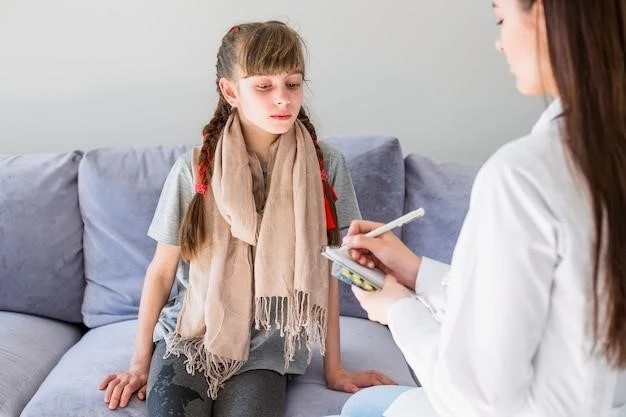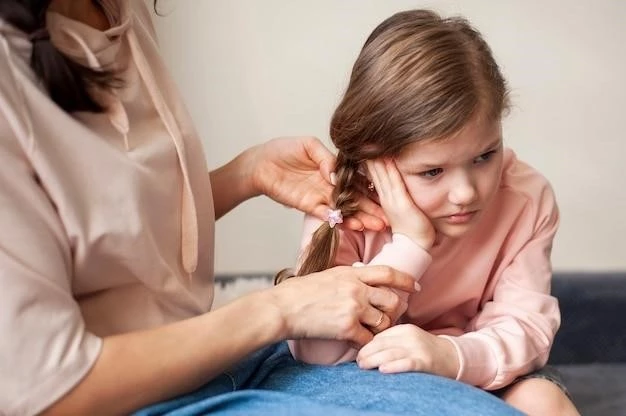CHILD Syndrome⁚ Causes and Symptoms
Understanding Ichthyosis in Children
Understanding Ichthyosis in children is crucial, as it is a rare genetic skin disorder characterized by dry, scaly skin. This condition can impact a child’s quality of life due to its effects on skin texture and appearance. Ichthyosis can vary in severity, from mild cases that cause slight dryness to more severe forms that result in thick, scaling skin all over the body. It is important for parents and caregivers to be aware of the symptoms, such as scaling, flaking, and redness, to seek appropriate medical care and treatment for their child.
Since Ichthyosis in children is a lifelong condition, understanding how to manage symptoms and minimize discomfort is essential. By learning about the triggers that worsen symptoms, such as cold weather or certain fabrics, parents can help their child avoid discomfort and flare-ups. Seeking guidance from healthcare professionals specializing in dermatology can provide valuable insights and treatment options to help children with Ichthyosis lead more comfortable lives.
Treatment Options for CHILD Syndrome
Treatment for CHILD Syndrome focuses on managing symptoms and improving the quality of life for affected individuals. Depending on the severity of symptoms, treatment may involve a combination of skincare routines, topical medications, and lifestyle adjustments.
Moisturizing creams and ointments are commonly used to alleviate dry, scaly skin associated with CHILD Syndrome. In more severe cases, prescribed medications like retinoids or oral medications may be recommended to help reduce thickened skin and itching. Dermatologists play a crucial role in developing personalized treatment plans that address the unique needs of each child with CHILD Syndrome.
Furthermore, maintaining proper hygiene practices, avoiding harsh soaps, and staying hydrated are essential components of managing symptoms. In some instances, phototherapy or laser therapy may be considered to help improve skin texture. It is important for caregivers and healthcare providers to work together to find the most effective treatment approach for children with CHILD Syndrome.
Genetic Factors of CHILD Syndrome
CHILD Syndrome is a genetic disorder caused by mutations in the NSDHL gene, which is essential for cholesterol production. These mutations lead to the characteristic skin abnormalities and other symptoms associated with the syndrome. The condition is typically inherited in an X-linked dominant pattern, meaning it primarily affects females.
Understanding the genetic basis of CHILD Syndrome is vital for accurate diagnosis and management. Genetic counseling can provide valuable information for families about the risks of passing the condition to future generations. Researchers continue to study the genetic factors underlying CHILD Syndrome to improve diagnostic techniques and develop targeted therapies that address the root cause of the disorder.
By unraveling the complex genetic mechanisms involved in CHILD Syndrome, scientists aim to enhance patient care and explore potential treatment strategies that may offer hope for affected individuals in the future.
Managing Skin Issues in Children with Ichthyosis
Managing skin issues in children with Ichthyosis requires a comprehensive approach that focuses on hydration, gentle skincare, and symptom relief. Regular moisturization using emollients and avoiding harsh soaps help maintain skin health and reduce scaling.
Baths with bath oils or oatmeal can soothe irritated skin, while careful clothing choices can prevent further irritation. In severe cases, topical treatments and medications prescribed by dermatologists may be necessary to manage symptoms effectively.
Educating children and their caregivers about triggers that exacerbate symptoms, such as environmental factors or certain fabrics, is crucial for proactive management. By developing a tailored skincare routine and lifestyle modifications, children with Ichthyosis can experience improved comfort and quality of life.
Early Diagnosis of CHILD Syndrome
Early diagnosis of CHILD Syndrome is crucial for timely intervention and management. Healthcare providers typically conduct a thorough physical examination and may perform genetic testing to confirm the presence of the NSDHL gene mutation.
Recognizing the characteristic skin abnormalities and developmental delays associated with CHILD Syndrome enables healthcare professionals to initiate appropriate treatment strategies early on. Early intervention, which may include skincare regimens and symptom management, can help improve outcomes and quality of life for affected children.
Increased awareness among healthcare providers and caregivers about the signs and symptoms of CHILD Syndrome plays a vital role in facilitating early detection and access to specialized care. By prioritizing early diagnosis, children with CHILD Syndrome can receive the support they need to manage the condition effectively.

Additional Resources⁚
Support Resources for Families Affected by CHILD Syndrome
Research Advances in Treating Ichthyosis
Ongoing research into treating Ichthyosis focuses on developing innovative therapies and understanding the underlying genetic mechanisms. Scientists explore potential drug targets and novel treatment approaches to improve symptom management and quality of life for individuals with Ichthyosis.
Advancements in technology and genetic research have paved the way for personalized treatment strategies tailored to the specific subtype of Ichthyosis. Clinical trials and collaborations within the scientific community contribute to the development of cutting-edge therapies that hold promise for the future of managing this rare skin disorder.
By staying abreast of the latest research advances, healthcare professionals can better inform patients and caregivers about emerging treatment options and participate in clinical trials that may offer new hope for individuals affected by Ichthyosis.
